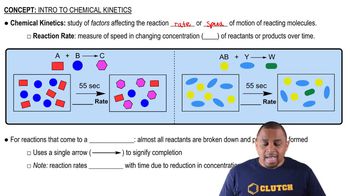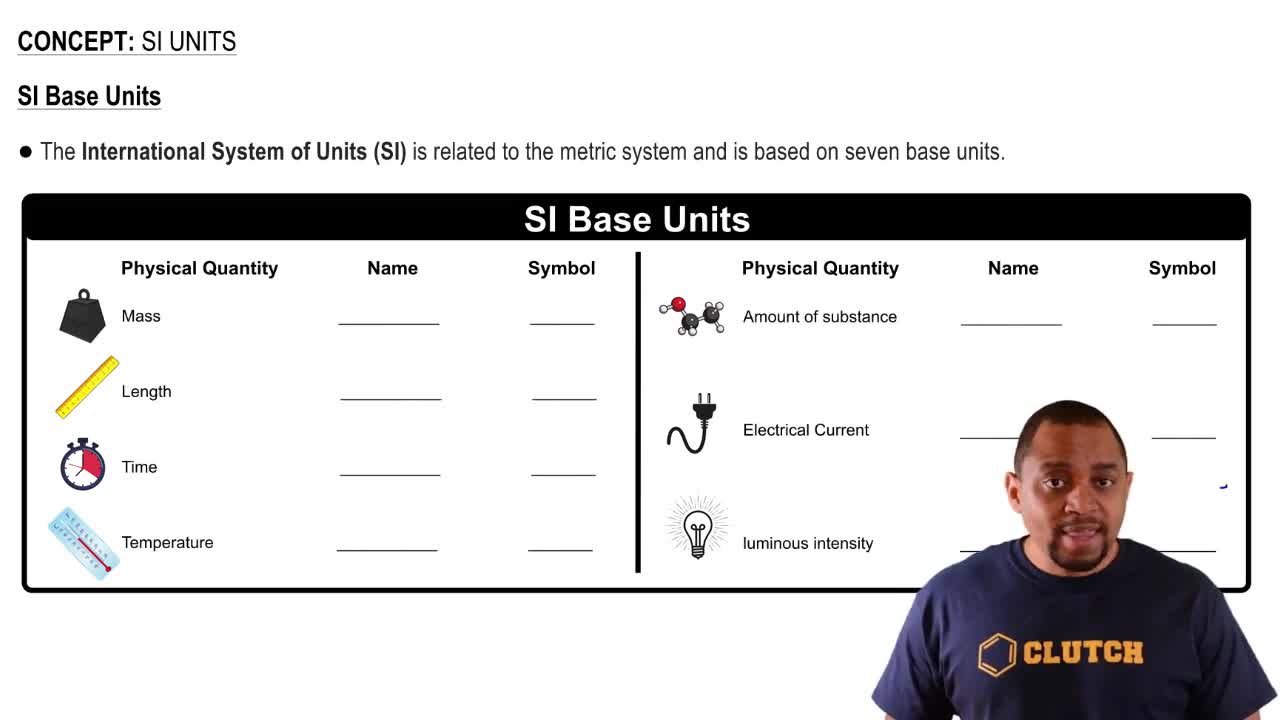Here are the essential concepts you must grasp in order to answer the question correctly.
Reaction Kinetics
Reaction kinetics is the study of the rates of chemical processes. It involves understanding how different factors, such as concentration, temperature, and catalysts, affect the speed of a reaction. In this context, knowing the kinetics of the decomposition of AB into A and B is essential to determine how the concentration of AB changes over time.
Recommended video:
Concentration Units
Concentration is a measure of the amount of a substance in a given volume of solution, typically expressed in molarity (M), which is moles of solute per liter of solution. Understanding how to interpret and manipulate concentration values is crucial for solving problems related to chemical reactions, such as determining when the concentration of AB reaches a specific value.
Recommended video:
Integrated Rate Laws
Integrated rate laws relate the concentration of reactants to time for a given reaction order. For a first-order reaction, for example, the integrated rate law can be used to calculate the concentration of a reactant at any time. In this case, applying the appropriate integrated rate law will allow us to find the time when the concentration of AB reaches 0.0250 M.
Recommended video:




